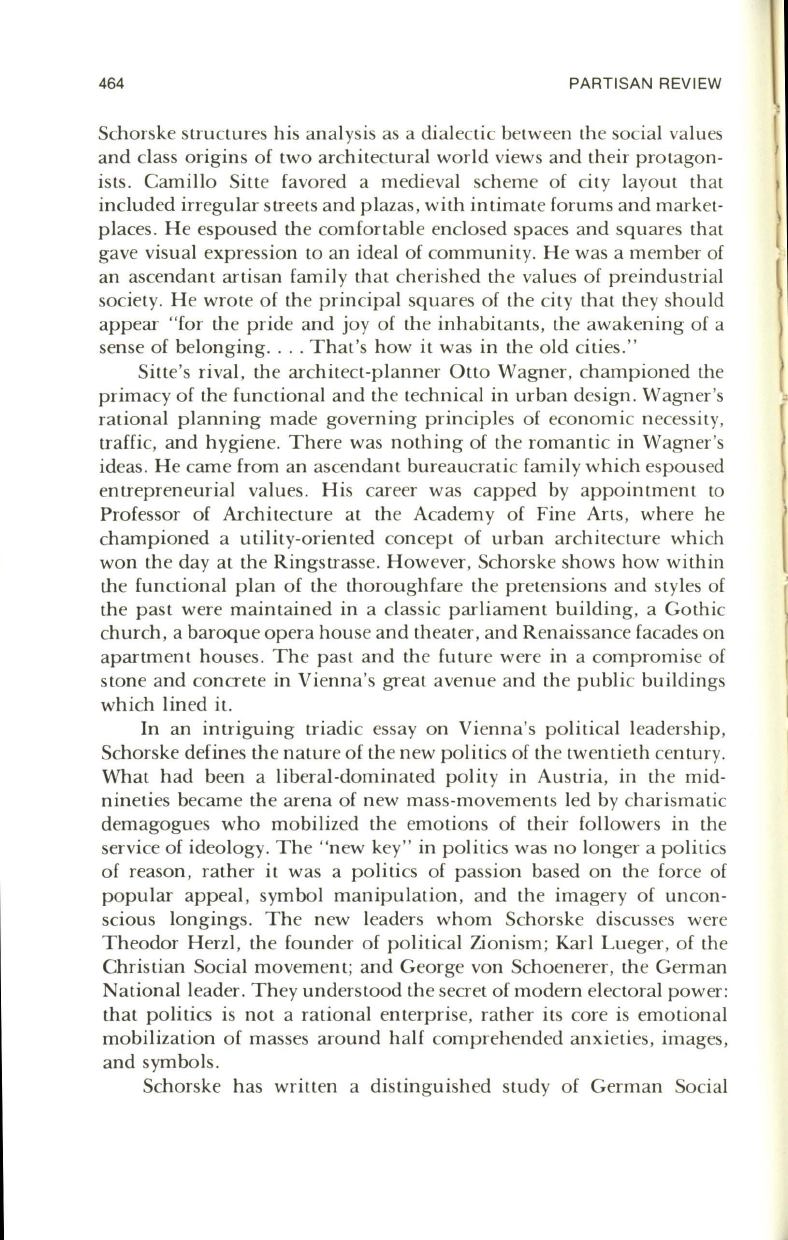
464
PARTISAN REVIEW
Schorske structures his analysis as a dialectic between the social values
and class origins of two architectural world views and their protagon–
ists. Camillo Sine favored a medieval scheme of ci ty layout that
included irregular streets and plazas, with intimate forums and market–
places. He espoused the comfortable enclosed spaces and squares that
gave visual expression to an ideal of community. He was a member of
an ascendant artisan family that cherished the values of preindustrial
society. He wrote of the principal squares of the ci ty that they should
appear "for the pride and joy of the inhabitants, the awakening of a
sense of belonging.. . . That's how it was in the old cities."
Siue's rival, the architect-planner Ouo Wagner, championed the
primacy of the fun ctional and the technical in urban des ign . Wagner 's
rational planning made governing principles of economic n ecessity,
traffic, and hygiene. There was nothing of the romantic in Wagner's
ideas . He came from an ascendant bureaucratic family which espoused
entrepreneurial values. His career was capped by appointment to
Professor of Architecture at the Academy of Fine Arts, where he
championed a utility-oriented concept of urban architecture which
won the day at the Ringstrasse. However, Schorske shows how within
the functional plan of the thoroughfare the pretensions and styles of
the past were maintained in a classic parliament building, a Gothic
church, a baroque opera house and theater, and Renaissance facades on
apartment houses . The past and the future were in a compromise of
sLOne and concrete in Vienna's great avenue and the public buildings
which lined it.
In
an intriguing triadic essay on Vienna's political leadership ,
Schorske defines the nature of the new politics of the twentieth century.
What had been a liberal-dominated polity in Austria, in the mid–
nineties became the arena of new mass-movements led by charismatic
demagogues who mobilized the emotions of their followers in the
service of ideology. The "new key" in politics was no longer a politics
of reason, rather it was a politics of passion based on the force of
popular appeal, symbol manipulation , and the imagery of uncon–
scious longings . The new leaders whom Schorske discusses were
Theodor Herzl, the founder of political Zionism; Karl Lueger, of the
Christian Social movement; and George von Schoenerer, the German
National leader. They understood the secret of modern electoral power:
that politics is not a rational enterprise, rather its core is emotional
mobilization of masses around half comprehended anxieties, images,
and symbols.
Schorske has wriuen a distinguished study of German Social


